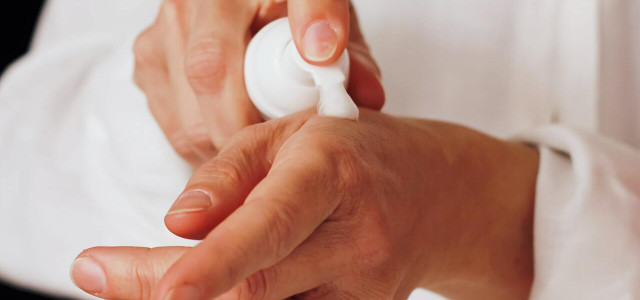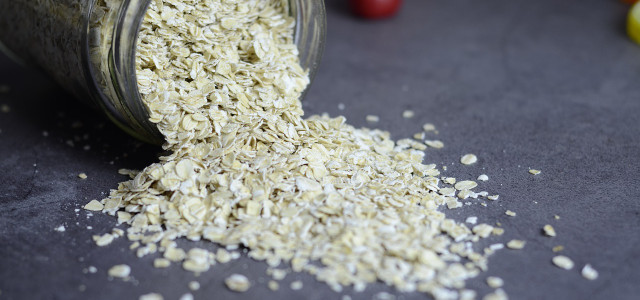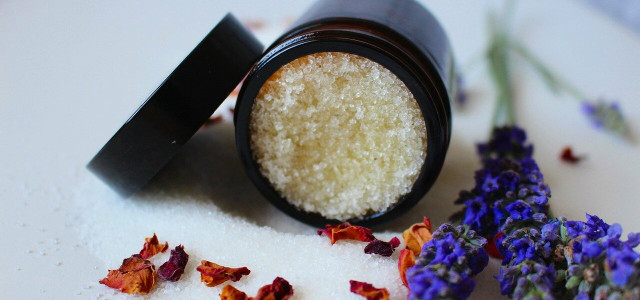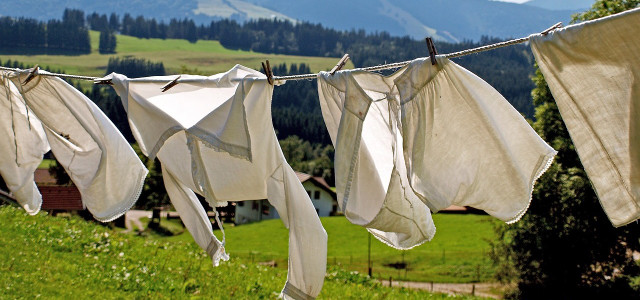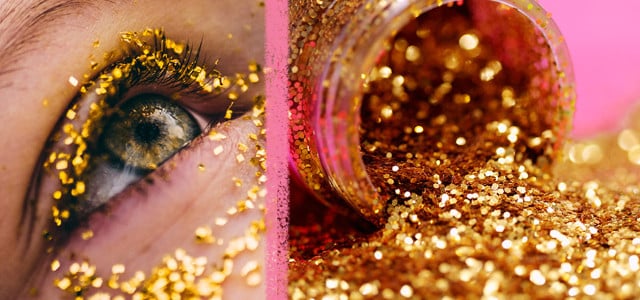Most of us have no idea about the bad ingredients in skin care that harm us and the environment. Read on for which ingredients to avoid and which cosmetics are harm-free.
You might be used to checking what’s in your food, but what about the products you put on your face? It’s easy to forget how prevalent cosmetics and skin care products are in our lives. It’s estimated that the average American man uses six products containing 85 chemicals every day, and the average woman uses 12 products with 168 chemicals. While most of these substances are safe and approved by the FDA, many are not. One study shows that over 73,000 products on American shelves contain chemicals linked to cancer, birth defects or infertility.
Considering you apply it to your body’s largest organ — that gives way directly to the bloodstream — it’s worth keeping an eye on what you put on your skin. But, it’s not only your body that these clandestine chemicals impact. Many of the products we use every day contain ingredients that contaminate oceans, poison wildlife and pollute the environment. The environment as a whole suffers from our lack of understanding and, more importantly, from a lack of care at the manufacturing level of skin care products and cosmetics.
The good news is that it’s increasingly possible to find products without these harmful ingredients. We’ll talk you through some of our recommendations and list the 13 ingredients you should watch out for.
1. Formaldehyde
Formaldehyde, a known carcinogen, is one of the most widely-known bad ingredients in skin care. It’s added to products like makeup, glues, gels, soaps, shampoos, lotions and deodorants to stop them from spoiling. It’s also used in nail products to bind with keratin. Completely banned from CVS from the end of 2019, there are several ingredients to watch out for, which are either versions or releasers of formaldehyde:
-
- Paraformaldehyde, a type of formaldehyde
- Methylene glycol, a type of formaldehyde
- Quaternium 15, which releases formaldehyde
There are, luckily, thousands of cosmetics and skin care products that do not contain formaldehyde. You can search for them on sites like skinsafeproducts.com. They include:
- Anastasia Beverly Hills Dip Brow Gel (available on Amazon**)
- Trish McEvoy Lash Curling Mascara (available on Amazon**)
- Estee Lauder Double Wear Stay-In-Place Makeup (available on Amazon**)
- Maybelline New York Color Sensational Shaping Lip Liner (available on Amazon**)
2. Oxybenzone and 3. Octinoxate



(Foto: CC0 / Pixabay / lpittman)
Unlike formaldehyde, you’ve probably heard of oxybenzone and octinoxate. These chemicals are most commonly used in sunscreen as UV filters — the active ingredient. They do a great job of blocking harmful rays from the deep layers of our skin; however, they are also extremely damaging to sealife and contribute to coral bleaching.
That’s a huge problem. Coral is an essential part of the marine ecosystem, and much sea life depends on it staying healthy. Scientists estimate that up to 90 percent of coral will disappear by 2050. Hawaii has already banned sunscreens with oxybenzone and octinoxate due to their impact on local coral reefs.
Some reef-safe sunscreens include:
- Kokua Sun Care Hawaiian SPF 50 Natural Zinc Sunscreen (available on Amazon**)
- Sun Bum Original Scent SPF 30 (available on Amazon**)
- Thinksport SPF 50+ Mineral Sunscreen (available on Amazon**)
- MANDA Organic Sun Paste – Natural, Reef & Ocean Safe – SPF 50 Sunscreen (available on Amazon**)
- Raw Love SPF 35 All-natural Mineral Sunscreen (available on Amazon**)
4. Mercury
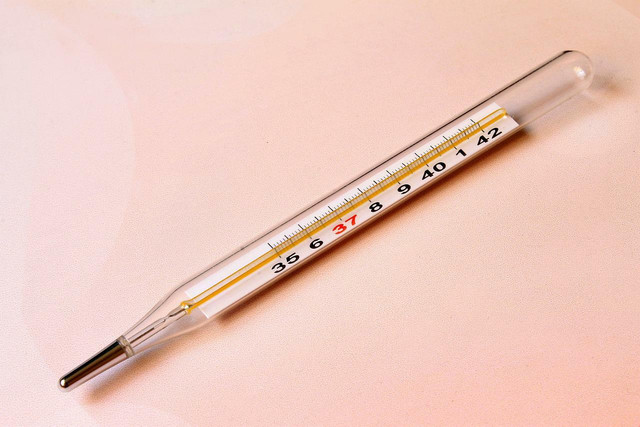


(Foto: CC0 / Pixabay / Gadini)
Mercury, commonly used as a skin-lightening agent, is also seen in products aiming to fight wrinkles, blemishes and dark spots as it inhibits the formation of melanin. Mercury is highly toxic and can easily be absorbed into the skin and bloodstream. There, it can go on to damage the kidneys and nervous system.
Check products marketed as skin-lightening or anti-aging for ingredients such as mercurous chloride, calomel, mercuric, mercurio and — of course — mercury.
Fragrances
Yep, pretty much anything fragranced is a double-whammy of harm to you and the environment.
Firstly, perfumes and colognes contain chemicals like solvents, stabilizers, UV-absorbers, preservatives and dyes, often not listed in their ingredients list. That makes it hard to know what you’re spraying on your skin. Unfortunately, many of these chemicals are known toxins with links to cancer, reproductive toxicity, allergies and sensitivities. They are particularly dangerous for people with asthma.
Just some of the ingredients to look out for (when you can find them) include:
5. Acetaldehyde: Negatively affects kidneys and the reproductive, nervous and respiratory systems and is carcinogenic.
6. Benzophenone: Linked to endocrine disruption, organ toxicity and the development of certain tumors.
7. Chloromethane (methyl chloride): A potential carcinogen.
8. Dibutyl and diethylhexyl phthalates: Can cause fertility issues, including early puberty, increased chances of testicular dysgenesis syndrome in males and increased chances of developing certain cancers. These two phthalates do not have to be disclosed on fragrance ingredient lists as individual chemicals but are nevertheless extremely harmful.
Secondly, these toxic chemicals end up polluting our water and impacting marine life in a variety of ways, like:
- damaging the external mucus layers that protect marine life from bacteria and parasites
- severely damaging gills
- causing death of animals when detergent concentrations approach 15 parts per million
- leading to death of eggs when detergent concentrations approach only 5 parts per million
- hindering breeding ability
- depleting oxygen from the presence of freshwater algal blooms from the fragrance phosphates
Fragrances are truly one of the worst ingredients in skin care and cosmetics. Opt for fragrance-free products when possible, or stick to products that clearly label their ingredients.
Parabens
Parabens are compounds typically used as artificial preservatives in cosmetics and skin care. They’re found in products like foundation, BB and CC creams, all sorts of moisturizers and lotions, hair-care products, and lipsticks. They are linked to hormone disruption, fertility issues, birth defects and increased cancer risk. This is intensified due to the ease with which they can enter the bloodstream through the skin. In fact, one 2006 study showed that all US participants across every demographic had paraben traces in their urine.
The Environmental Working Group also stresses that parabens kill coral reefs and may cause reproductive issues in animals. The most common parabens in cosmetics are:
9. Methylparaben: Used to prevent germ growth in skin care, cosmetics and food (E number 218).
10. Propylparaben: Found in water-based products such as creams, shampoos and bath products.
11. Butylparaben: Used to prevent bacteria, yeasts, and molds in skin care products.
12. Ethylparaben: Used as an antifungal preservative in cosmetics and food.
However, not all companies rely on parabens to deter germs. Here are some cosmetic companies that don’t use parabens in any of their products:
13. Sodium Lauryl Sulfate
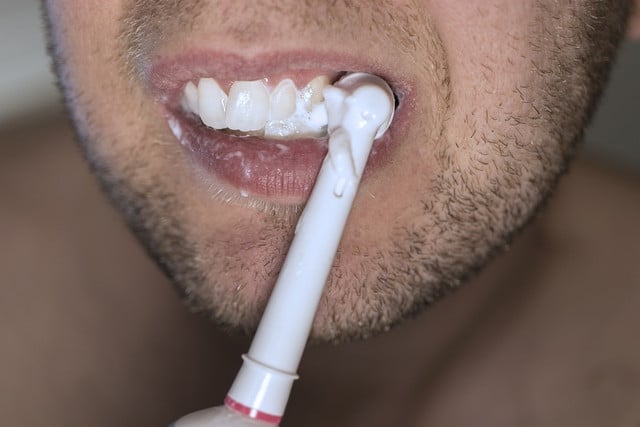


(Foto: CC0 / Pixabay / DaModernDaVinci)
Ever wondered what makes your toothpaste or shampoo foam like that? That’ll be thanks to sodium lauryl sulfate, a sulfate that studies have shown can be toxic to aquatic organisms and is regularly made with non-sustainable palm oil.
You can actually make foaming soaps at home, but if you’re looking for something pre-made, a few sodium lauryl sulfate-free alternatives include:
Shampoo
- OGX Nourishing Coconut Milk Shampoo (available on Amazon**)
- SheaMoisture Curl and Shine Coconut Shampoo (available on Amazon**)
Body wash
- Native Body Wash Natural Body Wash (available on Amazon**)
- Aveeno Restorative Skin Therapy Sulfate-Free Body Wash (available on Amazon**)
Toothpaste
- Sensodyne Pronamel Intensive Enamel Repair Toothpaste (available on Amazon**)
- Verve Ultra SLS-Free Toothpaste with Fluoride (available on Amazon**)
Read more:
- How to Keep Spiders Out of House Without the Harmful Chemicals
- Leaping Bunny: The Cruelty-Free Label
- DIY Beard Oil: All Natural Ingredients for Different Skin Types
Important Information regarding Health-related Topics.
** Links to retailers marked with ** or underlined orange are partially partner links: If you buy here, you actively support Utopia.org, because we will receive a small part of the sales proceeds. More info.Do you like this post?






